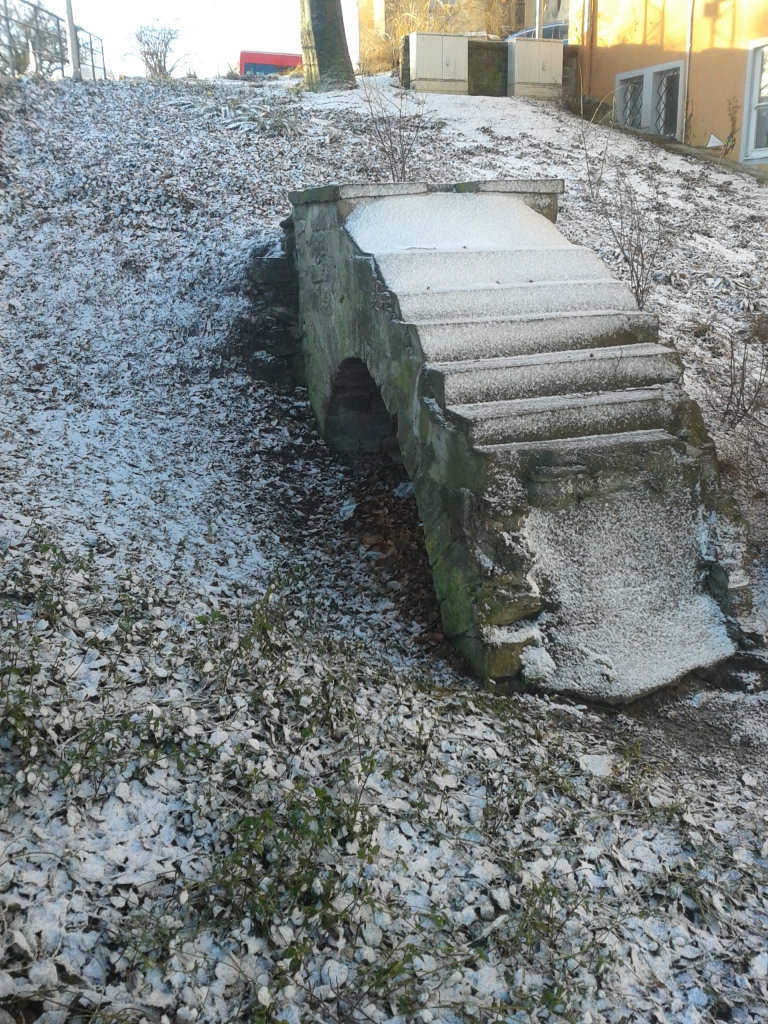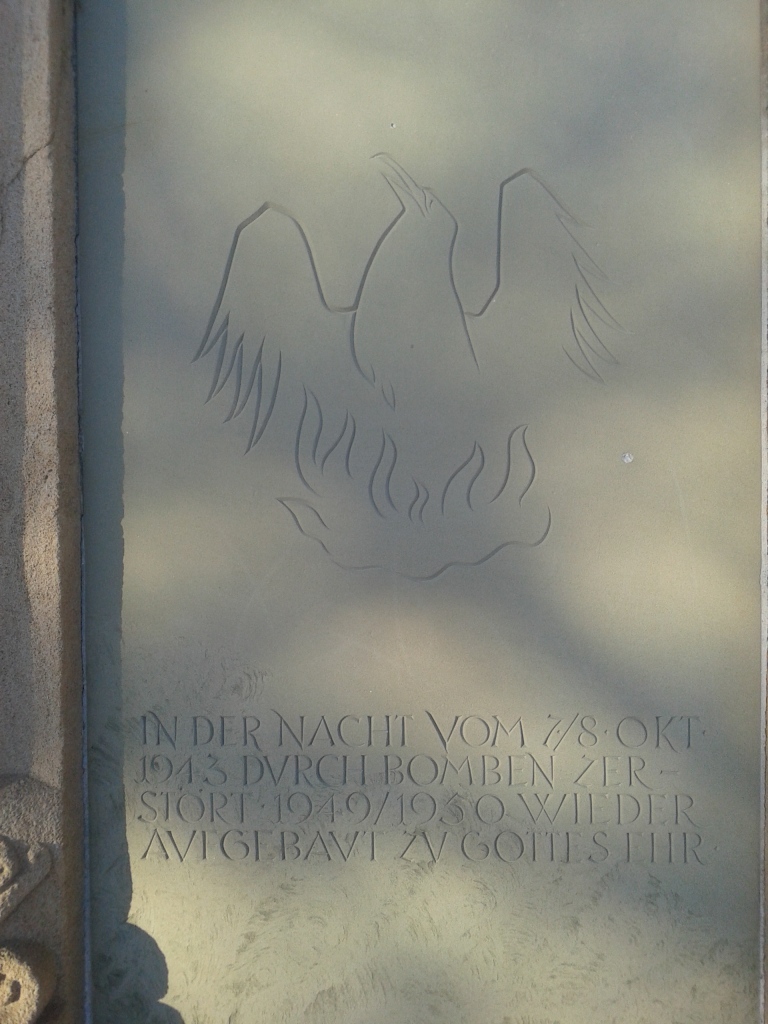I often write in this dialogue with you about the local history of Cambridgeshire, and frequently about the efforts during the Second World War which originated from the bases and airfields spread throughout southeast England. However, this week I find myself in the small town of Böblingen, Baden-Wurttemberg, in southwest Germany. It is an ancient town which was accidentally bombed during the war, bombed and destroyed. Here one sees the horrific reality of what 8th Air Force and Bomber Command’s strategic bombing wrought on the ground. The level of destruction waves of heavy bombers were capable of achieving in an effort to destroy Germany’s military might is sobering. This small town is but one example of millions of lives that were horrifically changed by the Second World War – and is not a judgment on guilt or innocence – but is simply what happened.

On the night of 7 October 1943, 343 Avro Lancaster Bombers, launching from airfields in Cambridgeshire and beyond, formed up and began a major night raid on the military-industrial targets of Stuttgart. It was overcast and dark, some of the aircraft from the 101st squadron were equipped with night-fighter jamming equipment (this was “CIGAR” first operational use in a combat mission). This allowed the bombers to conduct the raid with little resistance. A diversionary raid on Munich further confused the German fighters and the bombers reached their targets relatively unhindered and dropped waves of ordnance, explosives followed by incendiary bombs, losing only four aircraft that night. The mission was hailed as a success – for the industrial capacity of Stuttgart needed to be destroyed to slow the German war machine.
Things were very different in the sleepy town of Böblingen, 10 miles southwest of Stuttgart, where no military targets were located. By mistake, one of the two pathfinders which dropped aerial markers to guide in the remaining bombers, marked Böblingen instead of the industrial facilities of Stuttgart. Following the pathfinder’s lead, the Lancasters dropped 35 high-explosive bombs before over 400 incendiary bombs over the unsuspecting town. The Schloβberg, church, and over 70% of the old town was destroyed. 1,735 people lost their homes, and most tragically, 44 people died including 24 women and children. As I walked around the Schloβberg this week, which still is the central part of the rebuilt town, I found small intact pieces of the medieval castle which survived the night. One can still see the black scorching on the medieval stones, which were burned permanently into the rock by the inferno caused by the incendiaries. It isn’t hard to picture the horror of that night to the people of this small town, rushing about, seeking shelter and tending to the destruction.

Source Foto erstellt von Ansgar Walk. Photograph by Ansgar Walk . The shell of the nave of the protestant church can be seen in the centre of the photo, where the remembrance memorial now stands.


On the back of the rebuilt protestant church, which was just a shell of stone after the night’s bombing, I found a small stone marker that commemorates the loss of that night – a phoenix flies up from the ashes – and the inscription reads: “Destroyed by bombs during the night of 7/8 October 1943, rebuilt 1949/1950 for the glory of God.”

Sadly, another very similar event happened in 1944, when Böblingen was once again struck out of confusion by bombers seeking the heavy industry of Stuttgart. More deaths, more destruction in this small town so desperately affected by the Second World War.
A check of the Statistisches Bundesamt, the Federal German Records Office, shows that in the last census before the war, Böblingen had a population in 1939 of 12,560. In 1946, 10,809 people were counted in the town. 1,751 people had disappeared from the town. Behind those numbers are enormous tragedies: lost civilians in the raids yes, but also lost soldiers, dispossessed families that left never to return, and even those murdered by the regime. Time has passed now and I don’t seek to judge or to search for any more horror here. A tragedy has woven together with accidental targeting of an unimportant town, spurred by the deliberate bombing of military-industrial targets, the civilian losses, the impact of the war on these people, but also the crews of the four Lancasters which were lost that night, and the overall efforts of so many for so long during a dreadful time. The greater tragedy of the Second World War can best be found in seeking the personal stories, the human struggles of so many in the face of such horror over so long.
Writing to you from Böblingen, Germany. Brandon.


Hi Brandon
I studied your Cambridge Military History blog in more detail today. Very interesting and excellent written. The story of LTC Bob Vance and this picture of his wife and little girl, accepting his medal, so moving; I couldn’t read it without tears.
‘Go on with the good work!’
See you soon
Michiel
LikeLiked by 1 person
Are you still reachable?
LikeLike
Yes Lore, I am, I’ve just become more busy with work and have not posted in some time.
LikeLike
I read with interest your article on the bombing of Boblingen. Our family in Canada is trying to find out more information on the Oct 8, 1943 bombing of SIngelfingen where our grandfather died in the attack and was buried in Frankfurt on the Waldfriedhof. If you or anyone reading this post could give us any direction it would be appreciated. Thank you Erna de Vries
LikeLike
One note, the area was not free of defense industry as this article incenuates. Boeligen, adjacent to Sindelfingen was where the auto industry giant Domler Benz had (and still has) their factory, camouflaged at the time. And between the two, the Suttgart airfield, where the Nazis assembled aircraft with engines produced by the adjacent auto giant. We need to put this in prespective. My point, not as much a mistake during the age of imprecise bombing during a war filled with revenge. I say revenge, because of the Nazis bombing of Britain and the subsequent buzz bomb raids on its civilian population. May those who died, rest in piece.
LikeLike
And Boeblingen had two Kasernen, one for the Army and one for the Luftwaffe.
LikeLike
My uncle was present when it happened. He was a Dutch forced laborer who worked first in Sindelfingen but was replaced and stayed in Boblingen. This was a bit better place however when the bombs dropped he was refused safety in the bomb shelter as he was a foreigner. He had to find his own safety. He did survive and when he returned the shelter where he was refused was actually hit by a bomb and everyone in the shelter died.
LikeLike